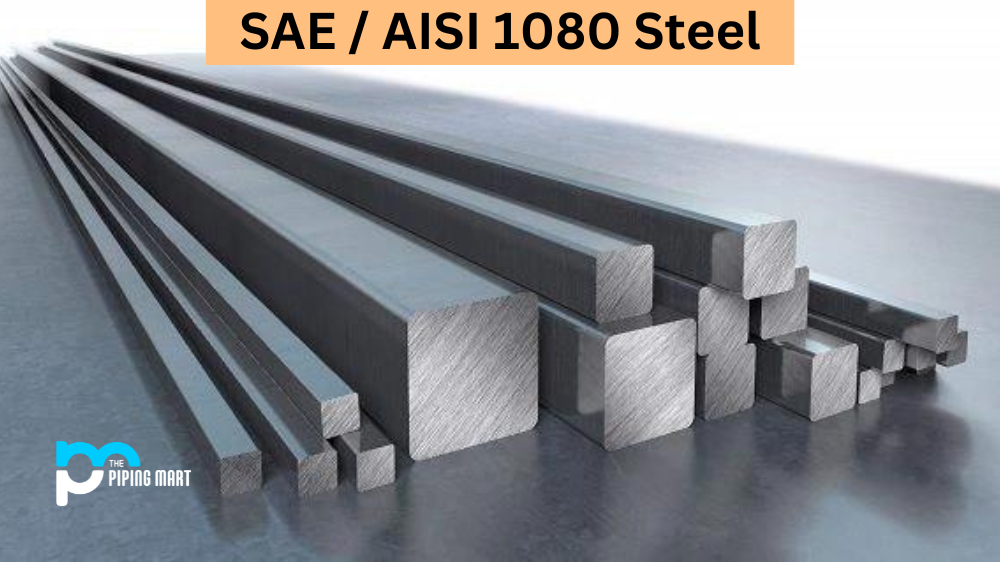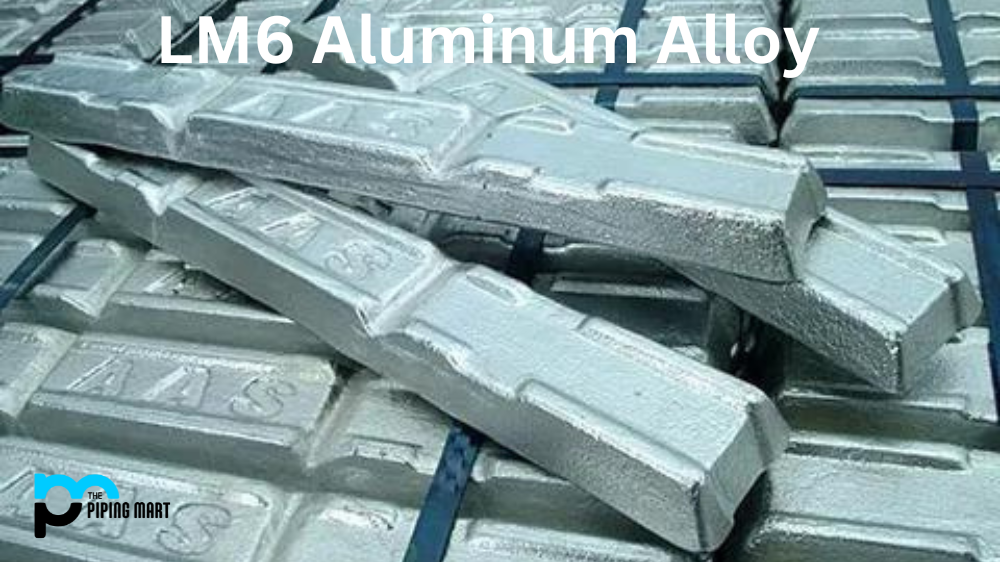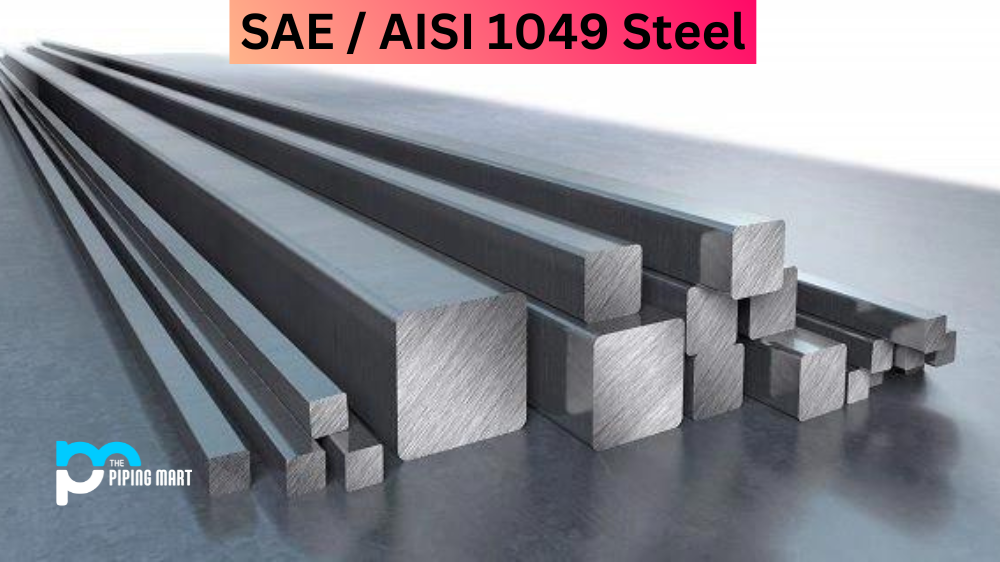SAE/AISI 1080 steel is a versatile alloy that can be used for a variety of applications. The main reason for its popularity is its high resistance to corrosion. In addition, 1080 steel has a good heat resistance and can be heat treated for additional hardness and strength. Here are some of the most common uses for 1080 steel.
SAE-AISI 1080 Composition
Grade 1080 steel is an alloy made from iron and carbon. The main elements that make up this alloy are iron (Fe), carbon (C), manganese (Mn), sulfur (S), phosphorus (P), and silicon (Si). Other trace elements may also be present depending on the grade of 1080 steel being used. In general, 1080 steel has a higher carbon content than other types of steel, which helps to increase its hardness and strength while maintaining its ductility.
| Element | Content (%) |
|---|---|
| Iron, Fe | 98.0 – 99.0 |
| Carbon, C | 0.75 – 0.88 |
| Manganese, Mn | 0.60 – 0.90 |
| Sulfur, S | 0.05 (max) |
| Phosphorous, P | 0.04 (max) |
SAE-AISI 1080 Chemical Properties
The chemical properties of alloy 1080 steel makes it ideal for use in many applications due to its ability to resist corrosion and wear. It has a high chromium content which helps it to resist corrosion from acids, alkalis, and organic compounds as well as saltwater spray. The silicon content also helps increase its ability to resist corrosion from oxidation or rusting when exposed to air or moisture for long periods. This makes it suitable for use in environments with high levels of humidity or water, such as marine applications.
SAE-AISI 1080 Physical Properties
Grade 1080 carbon steel is an incredibly strong metal option, boasting impressive physical properties for a wide variety of applications. Not only is 1080 steel highly resistant to wear and fatigue, but its tensile strength gives it superior fracture toughness when exposed to shock or vibration. A further benefit of incorporating 1080 steel into your designs lies in its low carbon content and simple heat treatment, resulting in improved weldability and fabrication characteristics. Whether you need to build a bridge or need something tough enough to hold up under extreme stress, 1080 steel has the capabilities necessary to complete the job.
| Properties | Metric | Imperial |
|---|---|---|
| Density | 7.7-8.03 g/cm3 | 0.278-0.290 lb/in³ |
SAE-AISI 1080 Mechanical Properties
Alloy 1080 carbon steel has a very high tensile strength ranging from 1200-1400 MPa, depending on the grade used. It also has excellent ductility, which allows it to be drawn into thin wires without breaking or deforming. The yield strength is also very good, which means it can withstand large amounts of force without permanently deforming or failing under load. It has good fatigue strength, which means it can withstand repeated loading and unloading cycles without cracking or breaking over time. Finally, it has excellent wear resistance, which makes it suitable for use in abrasive environments where other materials would quickly wear out or fail under load due to friction between moving parts such as gears and bearings in machinery.
| Properties | Metric | Imperial |
|---|---|---|
| Elastic modulus | 190-210 GPa | 29700-30458 ksi |
| Poisson’s ratio | 0.27-0.30 | 0.27-0.30 |
SAE-AISI 1080 Thermal Properties
| Properties | Conditions | ||
|---|---|---|---|
| T (ºC) | Treatment | ||
| Thermal expansion co-efficient | 14.7 x (10-6/ ºC) | 20 – 700 | annealed |
| Thermal conductivity | 48.1 W/mK | 100 | – |
SAE-AISI 1080 Uses
G10800 is one of the most versatile stainless steels on the market, as it has outstanding performance characteristics enabling it to be used in a number of applications. It is a premium-grade steel that offers excellent resistance to corrosive elements and atmospheric conditions, making it suitable for outdoor use or in temperatures between -200°F and 800°F. Additionally, its softness makes it sufficient for forging operations, making it an ideal choice for knife blades and mechanical springs. Its heat treatments can be modified to create even greater levels of strength, which then broadens the variety of items SAE / AISI 1080 can be used for, such as swords and hand tools. Whatever project you have in mind, SAE / AISI 1080 has the ability to meet your needs.
SAE-AISI 1080 Equivalent
- AMS 5110
- AMS 5110B
- ASTM A29 (1080)
- ASTM A510 (1080)
- ASTM A576 (1080)
- ASTM A682 (1080)
- ASTM A713 (1080)
- ASTM A830
- QQ S700 (C1080)
- SAE J1397 (1080)
- SAE J403 (1080)
- SAE J412 (1080)
- MIL SPEC MIL-S-16974
SAE-AISI 1080 Corrosion Resistance
One of the most popular uses for 1080 steel is in applications where high resistance to corrosion is required. This alloy has been shown to withstand attack from a variety of corrosive agents, including acetic acid, sulfuric acid, and hydrochloric acid. Additionally, 1080 steel is often used in marine environments due to its ability to resist saltwater corrosion.
Heat Resistance
Another common use for 1080 steel is in applications where high heat resistance is required. This alloy can withstand temperatures up to 1200 degrees Fahrenheit without suffering any significant loss of strength or hardness. Additionally, 1080 steel can be used in both hot and cold work applications.
Machining
1080 steel is also popular for its machinability. This alloy can be machined using both conventional methods and more modern methods, such as CNC machining. Additionally, 1080 steel can be machined into a variety of different shapes and sizes.
Welding
Finally, 1080 steel is also popular for welding applications. This alloy can be welded using both gas welding and arc welding methods. Additionally, 1080 steel can be welded to a variety of different metals, including carbon steel and stainless steel.
Conclusion:
Overall, 1080 steel is an excellent choice for many different applications due to its excellent combination of mechanical properties such as tensile strength, ductility, yield strength, fatigue strength, wear resistance, and corrosion resistance, as well as its low cost compared to other steels with similar properties. It can be machined easily using conventional tools, allowing it to be shaped into complex shapes without much difficulty making it suitable for use in many different industries, including automotive manufacturing, aerospace engineering, and industrial machinery applications. If you’re looking for an affordable yet durable material that offers superior mechanical properties, then 1080 steel could be the perfect choice for your next project!

A passionate metal industry expert and blogger. With over 5 years of experience in the field, Palak brings a wealth of knowledge and insight to her writing. Whether discussing the latest trends in the metal industry or sharing tips, she is dedicated to helping others succeed in the metal industry.




